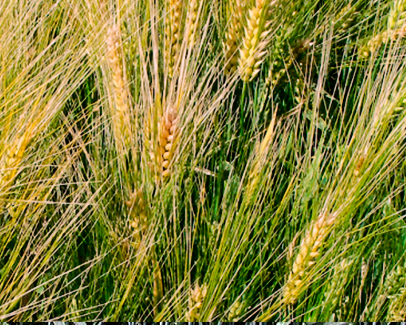Genetic improvement of barley at INIFAP (1985-2020)
DOI:
https://doi.org/10.29312/remexca.v12i25.2807Keywords:
genetic improvement, qualityAbstract
The genetic improvement of barley in Mexico began in 1954 in cooperation with the National Malt Industry, the Ministry of Agriculture and Livestock and the Rockefeller Foundation. In 1959, the first improved variety obtained by INIA’s barley program, Toluca I, was increased. Since its inception, INIFAP’s barley program has set out the objective of obtaining varieties that, given their quality and yield, satisfy the needs of both the farmer and the malting and brewing industrialists. For this reason, improvement research has focused on increasing yield, precocity and quality, as well as resistance to the most common diseases of the crop. Between 1959 and to date, the National Barley Program has released 22 varieties of barley (17 malting and 5 forage). With the creation of INIFAP in 1985, the program continued with research and the obtaining of genotypes suitable for malting and brewing. In these 35 years, great achievements in the release of varieties have been obtained, being Esperanza and Emerald the most important that, given their resistance to yellow stripe rust, allowed the production of barley for brewing under both irrigated and rainfed conditions; achieving national self-sufficiency in 2000. With these varieties, more than six million hectares were sown in Mexico, more than 300 000 ha per year and more than 50 000 families in the country were benefited.
Downloads
References
Aguilar, A. J. y Schwentesius, R. R. 2004. La producción de la cebada maltera en México: ventaja comparativa no capitalizada. Reporte de Investigación 72. Primera (Ed.). Centro de Investigaciones Económicas, Sociales y Tecnológicas de la Agroindustria y la Agricultura Mundial (CIESTAAM). Universidad Autónoma Chapingo. Estado de México. 62 p.
González, E. A.; Zamora, D. M.; Márquez, C. L. A.; Ramírez, P. F.; Ibañez, A. M.; Islas, G. J. y Wood, S. 2006. Impacto económico del mejoramiento genético de la cebada en México: variedad Esmeralda. Serie: estudios de evaluación del impacto económico de productos del INIFAP. Publicación técnica núm. 19. 69 p.
González, G. M.; Zamora, D. M. y Solano, H. S. 2016. Evaluación agronómica y física en líneas avanzadas de cebada maltera. Rev. Mex. Cienc. Agríc. 7(1):159-171. DOI: https://doi.org/10.29312/remexca.v7i1.380
IASA. 1983. Impulsora Agrícola S. A. El cultivo del a cebada maltera de temporal. Impulsora Agrícola, SA. México, DF. Folleto informativo. 68 p.
Navarro, F. M. 1983. Logros y aportaciones de la investigación agrícola en el cultivo de la cebada. Publicación especial Núm. 107. SARH, INIA. México, DF. 5-16 pp.
Riojas, G. E. 1973. Variedades mexicanas de cebada. INIA, SAG. México. Folleto de divulgación núm. 49. 20 p.
Schwarz, P. B. and Horsley, D. 1995. Malt quality improvement in North American six-rowed barley cultivars since 1910. J. Am. Soc. Brewing Chem. 53(1):14-18. DOI: https://doi.org/10.1094/ASBCJ-53-0014
Zamora, D. M. R.; Pérez, R. J. A.; Huerta, Z. R.; López, C. M. L.; Gómez, M. R. y Rojas, M. I. 2017. Maravilla: variedad de cebada forrajera para Valles Altos de México. Rev. Mex. Cienc. Agríc. 8(6):1449-1454. DOI: https://doi.org/10.29312/remexca.v8i6.317
Zamora, D. M.; Solano, H. S.; Huerta, Z. R. 2009. L a cebada maltera (Hordeum vulgare L.) cereal fundamental en la historia del Campo Experimental Valle de México. In: Reseña histórica 66 años de investigación al servicio de México 1943-2009. Publicación especial núm. 1. 45-49 pp.
Zamora, D. M.; Solano, H. S.; Huerta, Z. R.; González, G. M. y López, C. M. L. 2012. Programa Nacional de Cebada del INIFAP: cinco décadas de investigación aplicada. In: Día de Campo CEVAMEX 2012. Memoria técnica núm. 13. 137-140 pp.
Zamora, D. M.; Solano, H. S.; Pérez, R. J. A.; López, C. M. L.; Gómez, M. R.; Rojas, M. I. y Huerta, Z. R. 2015. Avances y perspectivas del cultivo de cebada en México. In: contribuciones científicas y tecnológicas del Campo Experimental Valle de México a 30 años de la creación del INIFAP y retos ante el cambio climático. Memoria técnica núm. 2. 116-127 pp.

Downloads
Published
How to Cite
Issue
Section
License
Copyright (c) 2021 Revista Mexicana de Ciencias Agrícolas

This work is licensed under a Creative Commons Attribution-NonCommercial 4.0 International License.
The authors who publish in Revista Mexicana de Ciencias Agrícolas accept the following conditions:
In accordance with copyright laws, Revista Mexicana de Ciencias Agrícolas recognizes and respects the authors’ moral right and ownership of property rights which will be transferred to the journal for dissemination in open access. Invariably, all the authors have to sign a letter of transfer of property rights and of originality of the article to Instituto Nacional de Investigaciones Forestales, Agrícolas y Pecuarias (INIFAP) [National Institute of Forestry, Agricultural and Livestock Research]. The author(s) must pay a fee for the reception of articles before proceeding to editorial review.
All the texts published by Revista Mexicana de Ciencias Agrícolas —with no exception— are distributed under a Creative Commons License Attribution-NonCommercial 4.0 International (CC BY-NC 4.0), which allows third parties to use the publication as long as the work’s authorship and its first publication in this journal are mentioned.
The author(s) can enter into independent and additional contractual agreements for the nonexclusive distribution of the version of the article published in Revista Mexicana de Ciencias Agrícolas (for example include it into an institutional repository or publish it in a book) as long as it is clearly and explicitly indicated that the work was published for the first time in Revista Mexicana de Ciencias Agrícolas.
For all the above, the authors shall send the Letter-transfer of Property Rights for the first publication duly filled in and signed by the author(s). This form must be sent as a PDF file to: revista_atm@yahoo.com.mx; cienciasagricola@inifap.gob.mx; remexca2017@gmail.
This work is licensed under a Creative Commons Attribution-Noncommercial 4.0 International license.


